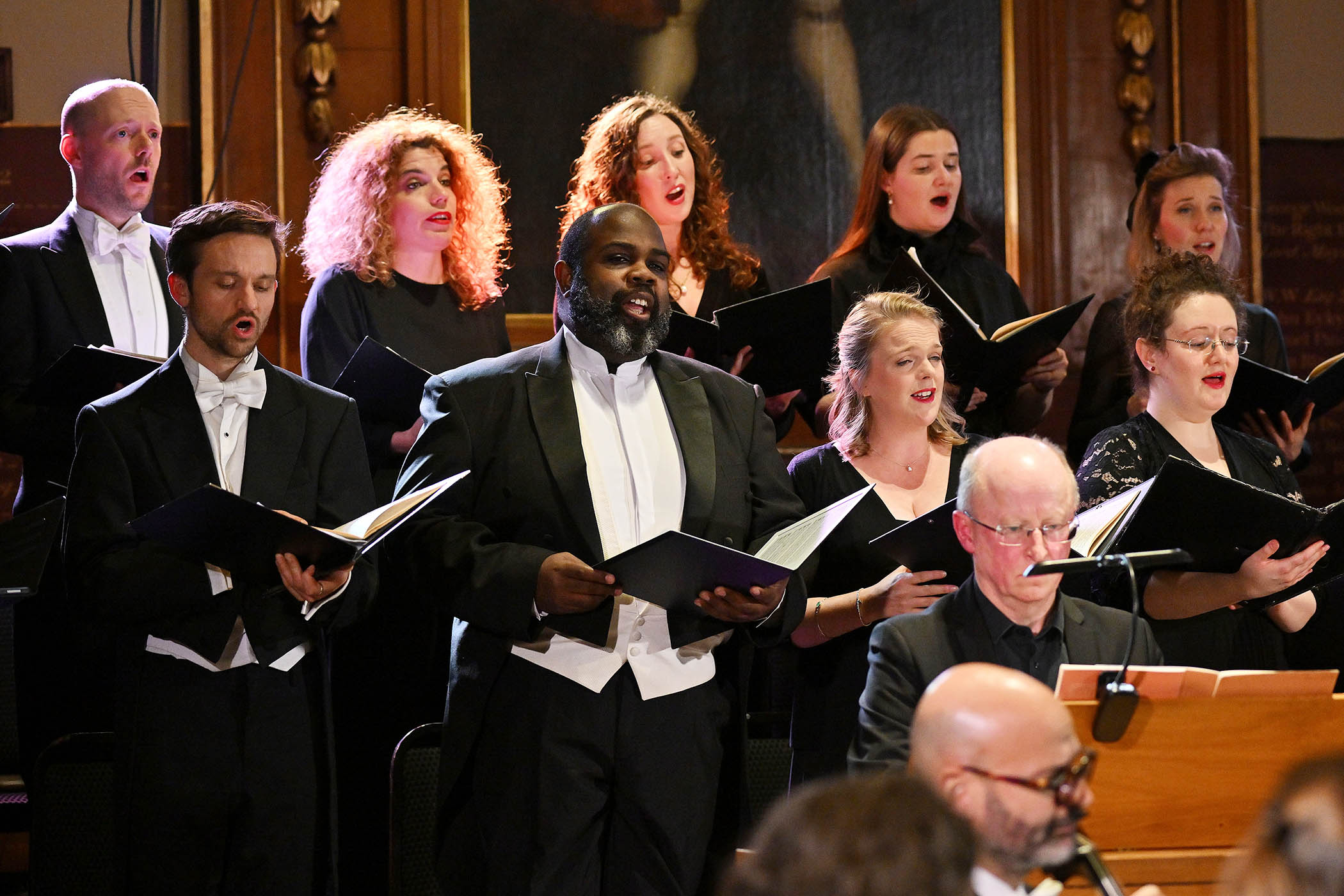Had parliament not been in recess recently, some politicians might have taken the five-minute walk to London’s Smith Square Hall and heard the inspirational sound of cross-border collaboration: English and French musicians working in harmony together, performing each other’s repertoire in the spirit of mutual respect and admiration, finding a place where borders are not seen as barriers but enriching meeting points.
This closing concert in the London Festival of Baroque Music was a reminder to this fractious, suspicious age that past generations saw music as an essential element in cross-Channel relations. If you have ever wondered why some of Henry Purcell’s music could have been written by Jean-Baptiste Lully, it is because King James II viewed the French court as a model for his own, and therefore French-style music was required. Purcell was quick to adapt.
In this, his inaugural year as the festival’s artistic director, the celebrated countertenor Iestyn Davies brought to London for the first time the Ensemble Marguerite Louise, the acclaimed Versailles-based baroque orchestra, to perform with the Choir of New College Oxford, in a concert entitled Royal Farewells and Triumphs.
To the solemn beat of a side drum and the plangent summoning of natural trumpets, the choir, resplendent in red cassocks, processed slowly into the auditorium to sing Purcell’s 1695 Music for the Funeral of Queen Mary, English Protestant restraint wrestling with the composer’s highly coloured, yearning harmony.
To the solemn beat of a side drum and the plangent summoning of natural trumpets, the choir processed into the auditorium to sing Purcell
The choir’s director, Robert Quinney, earns impressive results with the minimum of gesture, in marked contrast to his energetic and engaging collaborator Gaétan Jarry, who windmilled the ensemble and choir through Michel-Richard de Lalande’s florid and emotional De Profundis, probably written for the 1689 funeral of Marie Louise, queen of Spain, granddaughter of England’s Charles I. Quinney then honed in on the graciously sensual, intimate nature of Purcell’s 1685 anthem My Heart is Inditing, written in the French style for the coronation of James II, a piece that celebrates not only the pomp of ceremony but also the tenderness of femininity.
Marc-Antoine Charpentier’s exultant Te Deum, such a symbol of the Versailles court, closed the evening – its blazing prelude, all trumpets and drums, a bold statement of regal confidence. It is also familiar to radio listeners as the theme of the European Broadcasting Union, thus nicely underpinning the cross-border nature of this exceptional concert. Here we could fully appreciate the full-bodied sound of the French ensemble, which plays in a far looser, more fluid fashion than similar period orchestras in the UK, with viols lending a grainy edge to the rich texture.
Throughout, all vocal soloists were drawn from the choir, including several trebles, a significant achievement for such young singers and testament to their daily training. But the choir itself was not best served by being placed deep behind the orchestra on a stage already set far back. That situation will no doubt improve once the building, formerly known as St John’s Smith Square, has achieved its ambitious £22m redevelopment plan. It can’t come too soon: the Grade I-listed building is on Historic England’s heritage at risk register.

‘A spirit of mutual respect and admiration’: the Monteverdi Choir and English Baroque Soloists. Main image: the Ensemble Marguerite Louise and Choir of New College Oxford
Returned to its full glory is the magnificent 18th-century Great Hall at St Bartholomew’s hospital. Approached by its imposing staircase lined with vast canvasses by William Hogarth on the theme of healing, it has emerged from a £9.5m restoration. Celebrating its renovation last week – and testing its acoustics to the limit – were the Monteverdi Choir and English Baroque Soloists performing Purcell and the hall’s contemporaries, Bach and Handel.
This beautifully proportioned space, adorned with the names and portraits of the hospital’s historic benefactors and patrons, is a 200-seat stone and stucco shoebox with a natural resonance. Performers this good can let the room do the heavy lifting: push too hard and the sound will overwhelm your audience.
Purcell’s Hear My Prayer, three minutes of dissonant, despairing harmony, was immaculately sung but reached an almost unbearably loud fortissimo. Similar volume problems emerged in the eight-part Bach motets that followed, Der Geist hilft and Singet dem Herrn, though leavened by bright, springy tempi and an infectious joyfulness in the choir and orchestra.
Things settled down in Handel’s Dixit Dominus, audacious music that matched the confidence of the building. This superb performance brought out from the choir five singers who are among today’s most sought-after soloists, notably the countertenor Reginald Mobley, while sopranos Zoë Brookshaw and Chloë Morgan provided a welcome moment of serene calm in De torrente in via bibet, a duet whose entwining suspensions were a perfect fit for the ceiling’s opulent regilding.
Photographs by Anne Lefèvre/Mark Allan
